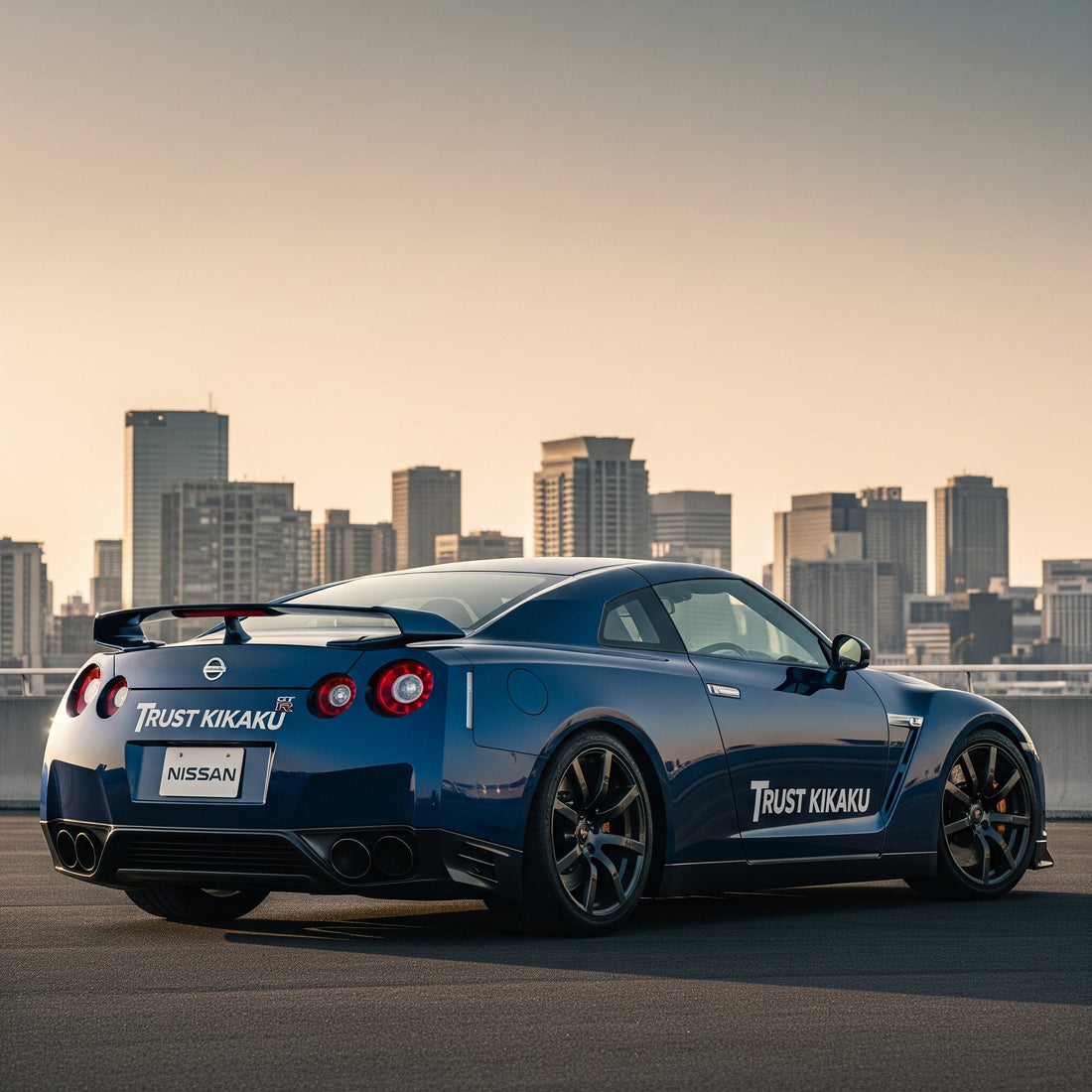At its core, the Nissan GT-R (Gran Turismo–Racing) is a high-performance sports car that evolved from the iconic Nissan Skyline GT-R lineage. While it shed the "Skyline" name with the R35 generation, it retained the spirit of its predecessors: a relentless pursuit of performance, achieved through cutting-edge technology and a focus on real-world usability.
Launched globally in 2007 (as a 2008 model), the R35 GT-R immediately made waves. Unlike many exotic supercars, which often prioritize flash over everyday practicality, the GT-R was designed to be a "supercar for anyone, anywhere, anytime." It boasts:
-
A Hand-Built Twin-Turbo V6 Engine (VR38DETT): This 3.8-liter powerhouse, assembled by master craftsmen known as "Takumi," delivers exhilarating horsepower and torque, pushing the car to incredible speeds.
-
Advanced ATTESA E-TS All-Wheel Drive System: This sophisticated system intelligently distributes power to all four wheels, providing immense traction and stability, allowing the GT-R to put its power down effectively in various conditions, from track days to snowy roads.
-
Dual-Clutch Transmission: A rapid-shifting 6-speed dual-clutch transmission ensures lightning-fast gear changes, optimizing acceleration and performance.
-
"Godzilla" Performance: The GT-R earned its "Godzilla" moniker from its ability to dominate racetracks and outpace far more expensive exotics, often at a fraction of their price. It's a car that punches well above its weight class.
When Will the GT-R's Model Cycle "Stabilize" (and What's Next)?
The R35 generation has had an exceptionally long and storied production run, spanning over 17 years since its 2007 debut. Nissan has consistently updated it with facelifts, power bumps, and special editions to keep it competitive.
However, the era of the R35 GT-R is indeed drawing to a close. Nissan has officially ceased taking orders for the R35 GT-R in Japan, and production is set to conclude around July 2025 (North American production ended in October 2024). This marks the end of a remarkable chapter for the R35.
As for "stabilizing" or what comes next, the future of the GT-R badge is certainly exciting, but with a potential gap:
-
No Immediate Successor: There will likely be a period without a new GT-R on sale, which isn't unusual for the GT-R lineage.
-
The R36 is Coming (Likely Hybrid): Nissan has confirmed that a successor, the R36 generation, is planned. Initial rumors suggested a fully electric future, hinted at by concepts like the Hyper Force. However, more recent reports indicate that the next-gen GT-R will arrive with a hybrid powertrain, combining a turbocharged V6 engine with electric motors. This aligns with Nissan's focus on maintaining the GT-R's track prowess and usability while adapting to future emissions regulations.
-
Timeline: Expectations for the R36's arrival are currently within the next three to five years, potentially around or after 2028, possibly coinciding with Nissan's advancements in solid-state battery technology. There's even speculation of potential co-development with a next-generation Acura NSX platform.
So, while the current R35 is retiring, the GT-R story is far from over. Nissan is taking its time to ensure the next iteration lives up to the legendary name.
Why is the GT-R So Significant and Loved?
The Nissan GT-R's enduring appeal stems from several key factors that set it apart:
-
Performance for Value: Historically, the GT-R offered supercar-level performance at a fraction of the price of its European rivals. This "giant killer" reputation made it accessible to a wider range of enthusiasts.
-
Technological Marvel: From its intricate all-wheel-drive system and advanced aerodynamics to its customizable driving modes and in-depth performance displays, the GT-R has always been a showcase of Nissan's technological prowess. It made advanced race-bred technology available on the street.
-
Everyday Usability: Unlike many supercars that are temperamental and impractical for daily driving, the GT-R is renowned for its surprising comfort, spacious cabin (for a 2+2 coupe), and robust build quality. You could genuinely drive it to work, then take it to the track on the weekend.
-
Rich Heritage and "Godzilla" Mythos: The GT-R name carries a legendary history, particularly with the Skyline GT-R models (R32, R33, R34) that dominated motorsport in Japan and Australia. This heritage, combined with its "Godzilla" nickname, imbues it with a powerful and aggressive image that resonates deeply with fans.
-
Tuning Potential: The VR38DETT engine and robust drivetrain of the R35 GT-R are famously receptive to aftermarket tuning, allowing owners to extract immense power and further customize their machines, fostering a massive enthusiast and tuning community.
-
Pop Culture Icon: Its prominent appearances in video games (like Gran Turismo and Need for Speed) and blockbuster movies (most notably the Fast & Furious franchise) introduced the GT-R to a global audience, cementing its status as a cultural icon for a generation of car lovers.
In essence, the Nissan GT-R isn't just a car; it's a statement. It's a testament to innovation, a symbol of attainable performance, and a beloved icon that has redefined what a sports car can be. While we bid farewell to the R35, the anticipation for the next chapter of Godzilla's legacy continues to build.

